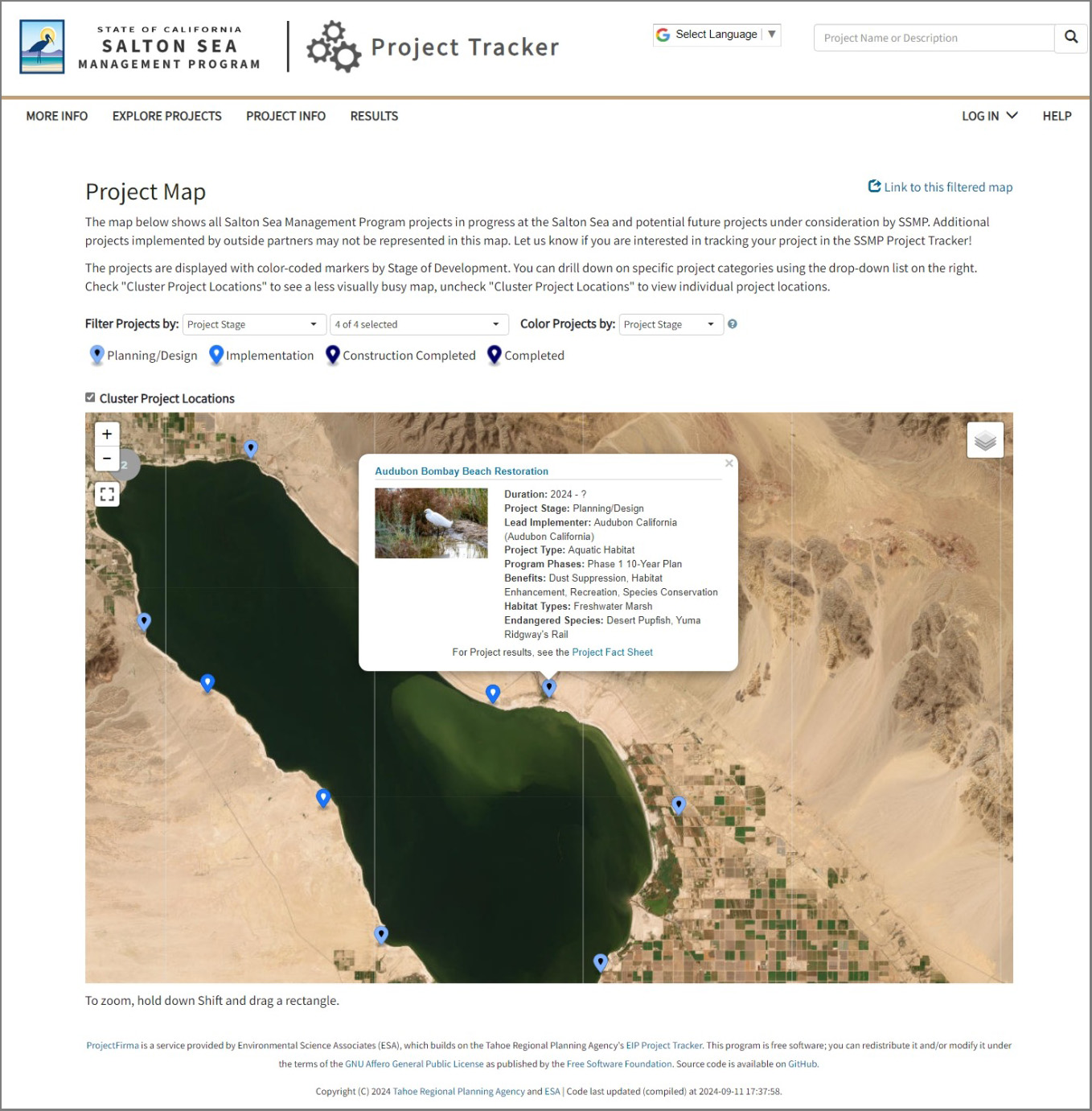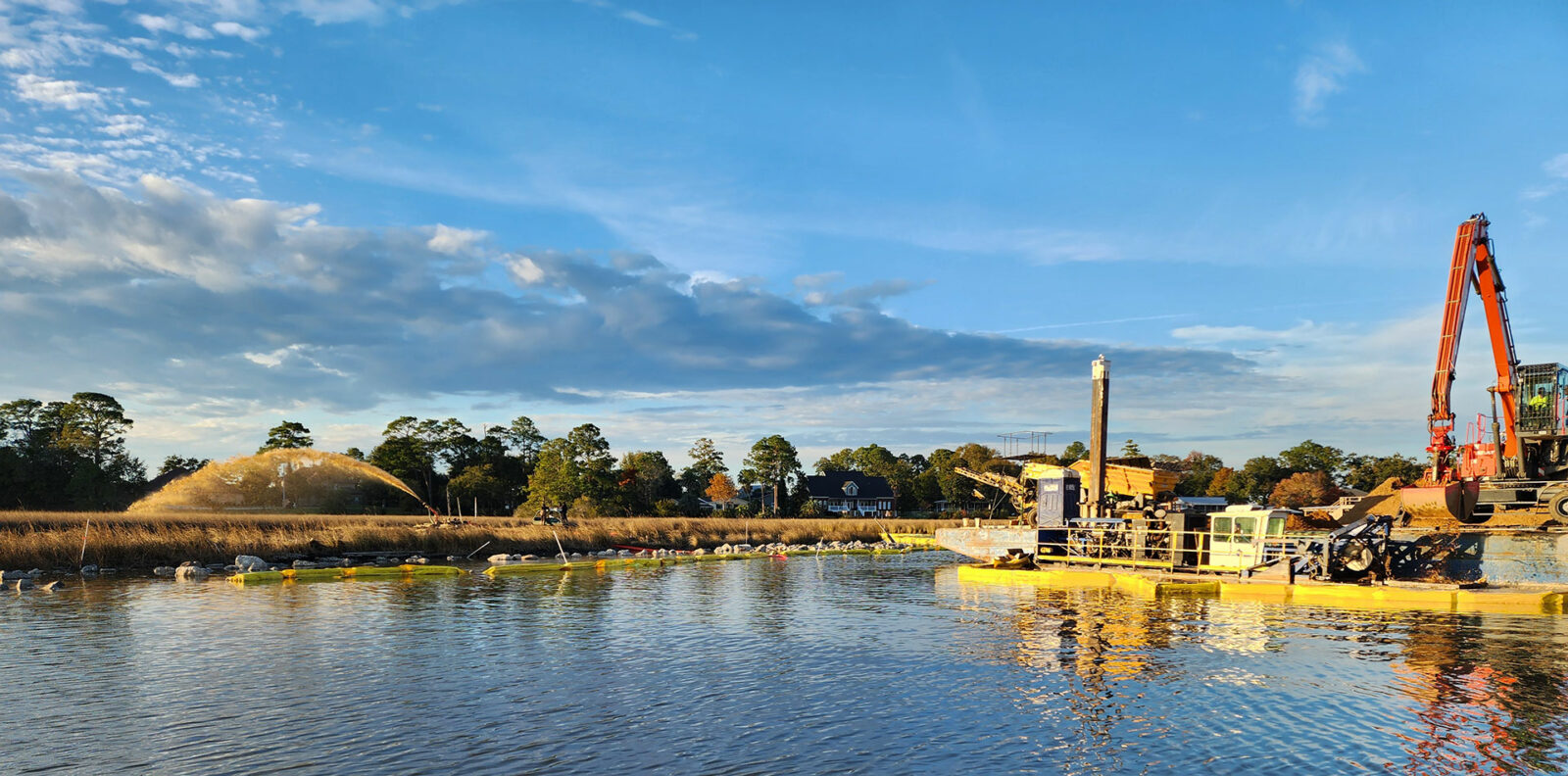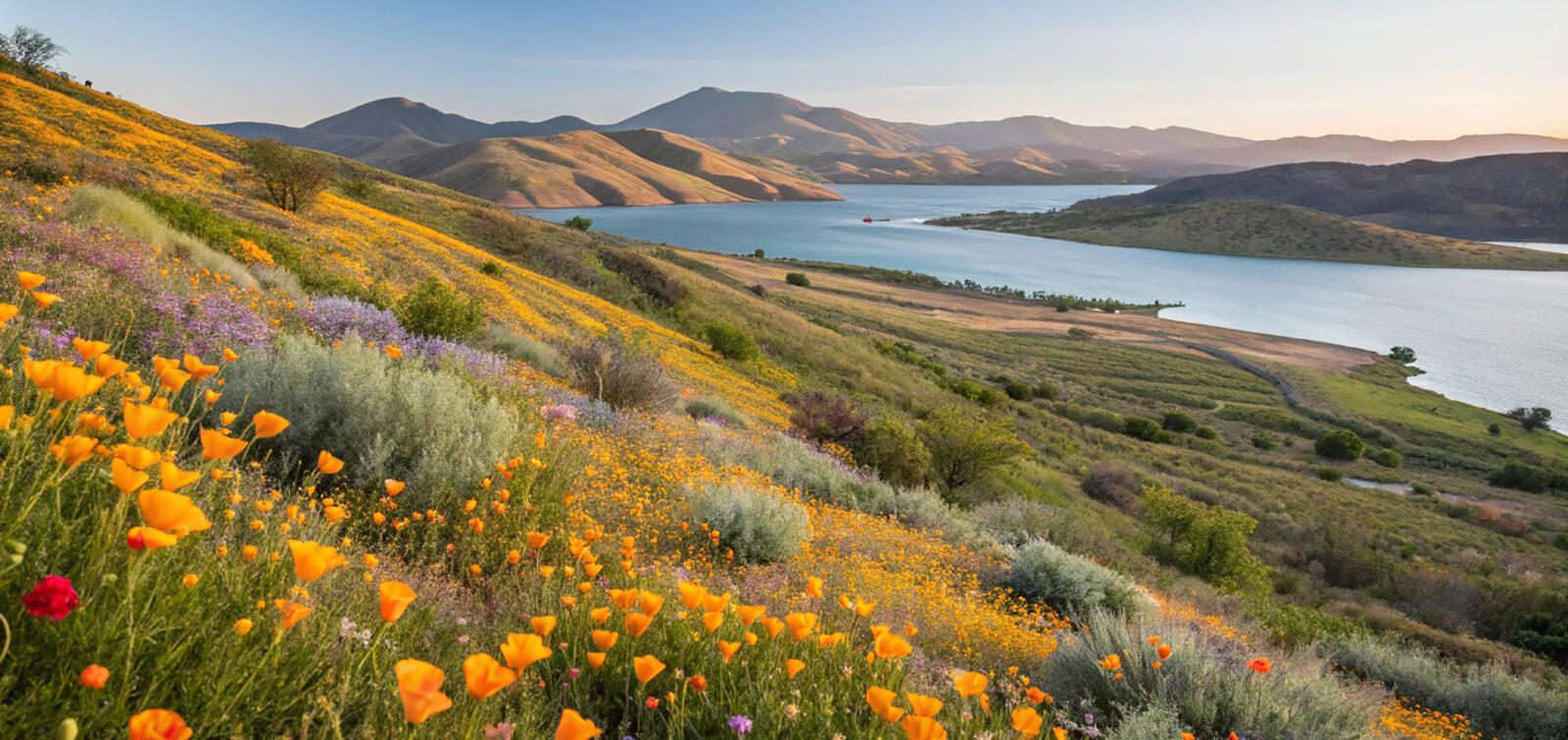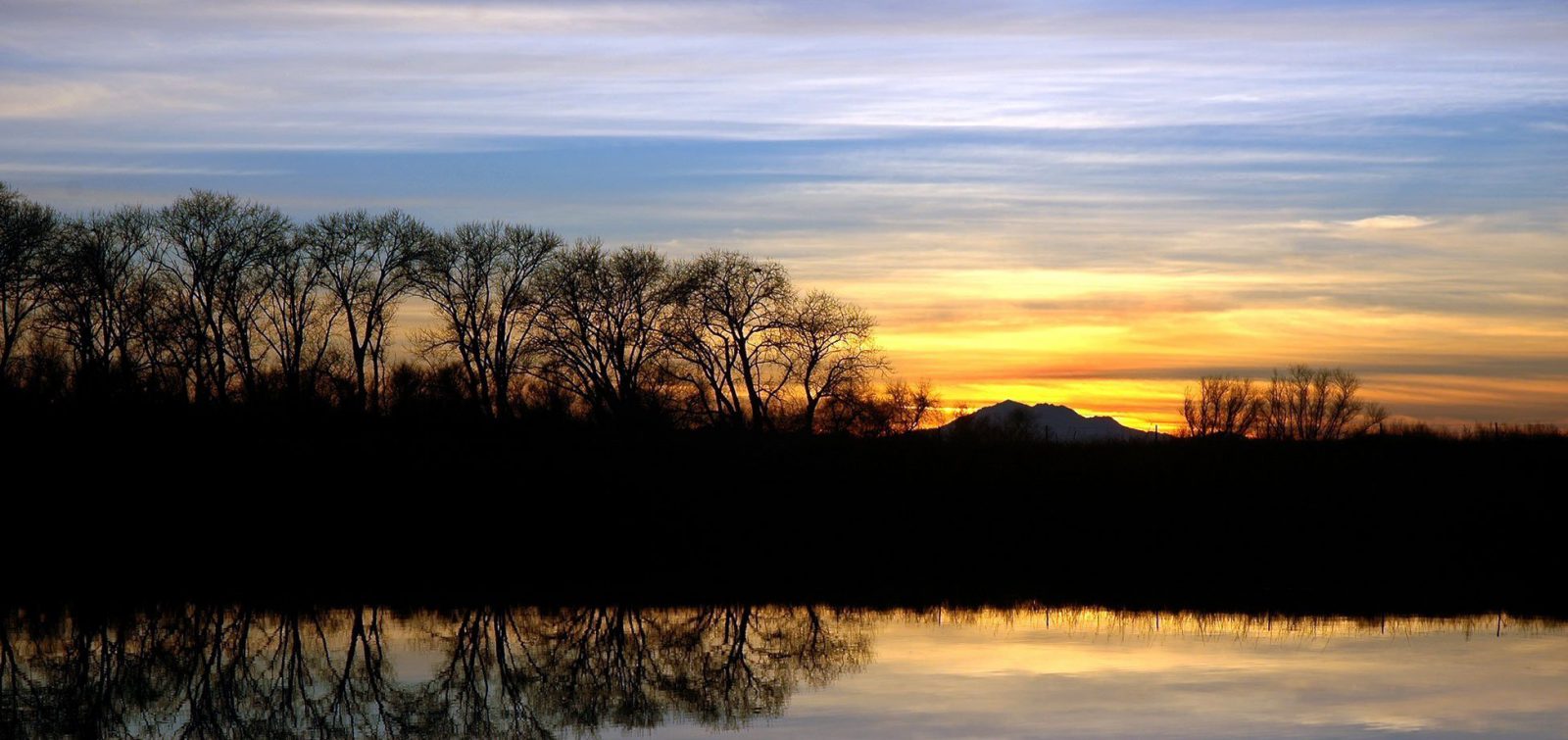Note, this is the second of two articles exploring how ESA is helping to study and manage resources along the Colorado River and the Salton Sea. Our first article can be found at this link.
Located in the core of California’s Imperial Valley, the Salton Sea is a rapidly changing ecosystem where some of the most challenging issues in water conservation, ecological protection, and environmental justice issues converge.
In the past two decades, water levels at the Salton Sea have dramatically declined due to Colorado River water transfers and conservation efforts, prompting the state to develop long-term plans like the Salton Sea Management Program (SSMP) and numerous region-wide initiatives to address the pressing environmental crisis.
For more than seven years, ESA has played a key role in this management effort as a principal scientific consultant to the state. Developing regional monitoring plans and a project tracking tool as part of the SSMP, the firm has also supported local water agencies by examining the potential ecological impacts of proposed water conservation and recycling measures.
A Desert Sea
Situated in the Sonoran Desert in southern Riverside and northern Imperial counties, the Salton Sea was formed in 1905, when water from the Colorado River breached an irrigation canal and flowed continuously into this desert basin for two years—forming a lake that spans 400 square miles and sits 200 feet below sea level. For more than 100 years, this terminal lake has been sustained principally by agricultural runoff from the surrounding Imperial and Coachella valleys, as well as inflows from small tributary creeks.
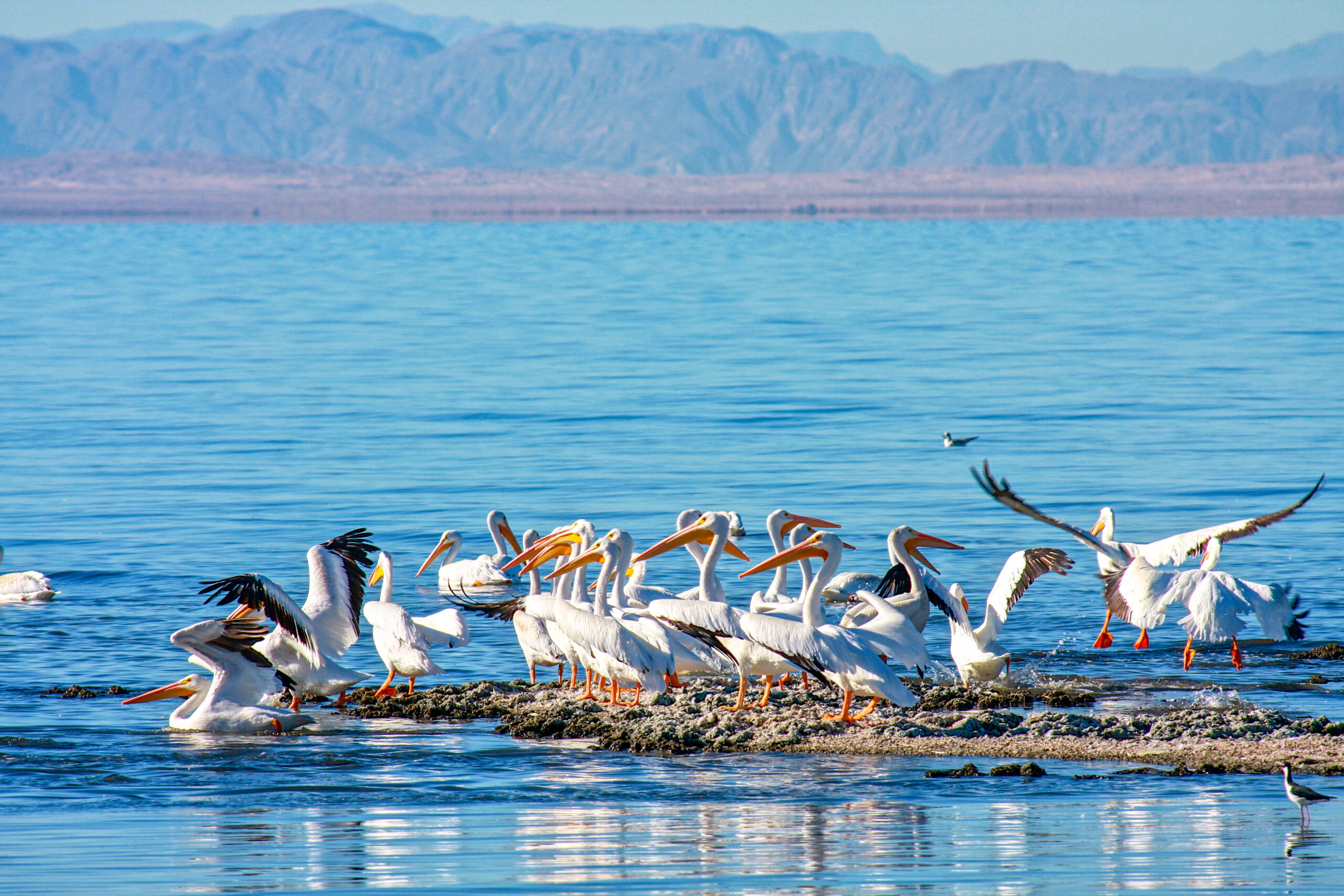
The Salton Sea has supported more than 400 species of resident and migratory birds and is a critical stopover on the Pacific Flyway. Fringing wetlands provide habitat for endangered Yuma Ridgway’s rail, while endangered desert pupfish persist in creeks and drainages. Historically, the Sea supported abundant fish and aquatic invertebrates that fed thriving populations of white pelicans and eared grebes. And, once a popular recreational destination for fishing, it has supported over thirty species of fish from the Colorado River and the Sea of Cortez.
Ecological and Health Concerns
However, over the past two decades, mandated water transfer policies and conservation actions enacted upstream on the Colorado River have reduced the inflows to the Salton Sea. In just 25 years, more than a third of the Sea has dried up, exposing lakebed soils around the Sea’s perimeter. Wind erosion contributes to dust emissions in the region—already subject to high levels of dust during windy conditions coming from the surrounding natural desert and agricultural lands.
The fine dust poses public health risks for nearby agricultural communities and disadvantaged populations in the Imperial Valley. This area suffers some of the worst air quality in the region and childhood asthma rates are double the state average. Residents also endure foul, rotten-egg smelling odors year-round caused by hydrogen sulfide, which is released by bacteria breaking down decomposing algae and other organic matter.
The ecosystem has also drastically changed. The diminishing inflow has accelerated increasing salinity. Since 2009, salinity levels have increased by 40 percent—making the water in the Sea almost twice as salty as the ocean—and thus essentially uninhabitable to fish species. Nutrients, selenium, and pesticides from runoff are also a concern. Lately, the bird community has shifted, now consisting primarily of shorebirds that rely on invertebrates tolerant of hypersaline conditions, such as brine shrimp.

A Partner in Monitoring Efforts
Over the past 5 years, ESA Restoration Ecology Program Manager Ramona Swenson has been focused on improving habitat and air quality in the Salton Sea. Working with the California Department of Water Resources (DWR), she led the development of the Salton Sea Monitoring Implementation Plan (MIP), a regional-scale plan to implement monitoring activities to track environmental resources and processes. The MIP outlines data collection and analysis programs that adapt to dynamic conditions and identify additional management needs.
“The Salton Sea is a swiftly evolving ecosystem, and we need to stay on top of current information,” says Swanson.“ That means keeping close watch on indicators such as the extent of playa and vegetation, inflow and water levels, water quality, birds and aquatic species, and dust emissions.”

“By understanding the status and trends of these factors, resource managers and decision-makers can better adapt to changing conditions and make informed decisions toward habitat enhancement and dust suppression projects.”
Ramona Swenson, Restoration Ecology Program Manager
ESA’s efforts are part of the broader SSMP program, a large-scale management approach led by the State of California that aims to restore habitats, reduce exposed lakebed, and improve air quality. The SSMP involves several state agencies with a 10-year plan that aims to improve conditions by constructing 30,000 acres of habitat and dust suppression projects around the Sea by 2028.
ESA has been providing scientific oversight and preparing regional monitoring workplans to document key metrics and trends; identify potential impacts to aquatic, riparian, and agricultural upland resources; and anticipate future changes in the Sea’s hydrology, ecology, and water quality.
The firm has also been evaluating potential outcomes from Colorado River water near-term conservation efforts. ESA assisted the Bureau of Reclamation and the Imperial Irrigation District with assessing potential environmental impacts of proposed voluntary water conservation programs posed by the Temporary Colorado River System Water Conservation Project. The final Environmental Assessment was published by the Bureau of Reclamation this August.
ESA has also coordinated with DWR and wildlife agencies to secure federal approvals, and supported environmental consultation and NEPA compliance oversight with Phase 1 of the SSMP.
Tracking Progress
Tracking progress is crucial for managing the Salton Sea. Agencies needed to consolidate data into one place to report accomplishments and inform the public. Working with DWR, ESA’s technical specialists developed the SSMP Project Tracker, an online tool to view the progress made on habitat and dust suppression projects under the SSMP Phase I: 10-year plan.
Ongoing projects in the Salton Sea are meant to be responsive to environmental shifts, and state water managers will be able to use tools like the SSMP Project Tracker to see how projects are working as designed, so that they are better equipped to take new directions or redesign accordingly, says Technology Services Lead Liz Christeleit, who steered the platform’s development.
“The Project Tracker is meant to provide an easy-to-use and robust data management system, which helps regulatory agencies get out of organizational, spreadsheet nightmares,” Christeleit says.

“We provide data management systems so agencies can focus on the more important questions, like ‘how do we adaptively manage projects,’ and thus provide transparency to the community about this important work.”
Liz Christeleit, Technology Services Lead
The Future of the Salton Sea
Because natural inflows have diminished, the Salton Sea relies on agricultural runoff, and would be evaporating at a faster rate if not for this water source. As California explores water conservation measures, the urgency for environmental solutions to prevent further adverse environmental conditions is growing.
This August, the California State Senate passed SB 583, establishing the Salton Sea Conservancy. Operating within the Natural Resources Agency, the Conservancy will be tasked with managing the SSMP and overseeing efforts to protect public health and ecological recovery around the basin, following Governor Newsom’s signing of the bill.
And with more than $250 million funded through the Inflation Reduction Act for restoration efforts, along with $60 million from the state’s Greenhouse Gas Reduction Fund, plus additional potential funding to be decided by state voters, more funding may soon be headed to address the region’s complex challenges.
Managing ecological resources in the Salton Sea will require complex decisions and requires a dynamic team of environmental specialists who are ready to take these challenges head on.
“ESA has a deep understanding of the tension between water supply and ecological resources,” says Senior Water Principal Tom Barnes.

“We are actively supporting water agencies to develop solutions that balance our communities’ water needs with ecological and public health imperatives.”
Tom Barnes, Senior Water Principal
For more information about ESA’s experience contact Ramona Swenson, Liz Christeleit, and Tom Barnes.

